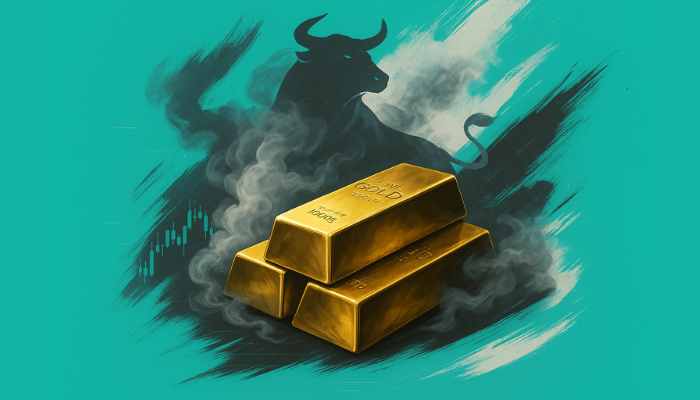 |
| Gold V.1.3.1 signal Telegram Channel (English) |

Gold Hits $4,100 and Silver Targets $50: What Investors Need to Know in 2025
2025-10-09 @ 20:01
Gold and silver have surged to remarkable highs in recent weeks, with investors globally watching closely as both precious metals strive toward historic price milestones. Gold is approaching $4,100 per ounce, while silver has breached previous all-time records, with market participants eyeing $50 per ounce as the next major target. This dramatic ascent is driven by a mix of economic shifts, policy changes, and increasing demand from both investors and industry.
Macroeconomic Backdrop: A Dovish Turn from the Fed
A pivotal catalyst behind these price rallies has been a marked shift in Federal Reserve policy. After a prolonged period of hawkishness to subdue inflation, the central bank has signaled a more dovish approach, raising expectations of interest rate cuts in the near future. Historically, a falling interest rate environment tends to benefit gold and silver by reducing the opportunity cost of holding these non-yielding assets.
As the dollar softens in response to potential rate cuts and inflation jitters linger, investors are increasingly turning to precious metals as safe havens against both currency depreciation and broader financial uncertainty. Central banks, particularly in Asia, have continued to accumulate gold, reinforcing market confidence and further supporting these elevated prices.
Gold: New Benchmarks and Institutional Demand
Gold’s surge is driven not only by retail investors hedging against macro risks, but also by broad-based institutional inflows. Central banks, led by China, have been persistent buyers, providing a strong foundation for gold’s upward trajectory. The current geopolitical landscape—marked by heightened tensions and conflict in several regions—has amplified gold’s appeal as a hedge against systemic instability.
Gold recently notched its 40th new benchmark high of the year, nearing the $4,100 mark in key trading hubs. Leading investment banks have revised their forecasts upward, with some expecting the metal to trade even higher as 2025 progresses. The massive influx of funds into gold-backed Exchange-Traded Funds (ETFs) further underscores the widespread confidence in bullion’s long-term prospects.
Silver: Outpacing Gold, Driven by Supply and Demand Dynamics
Silver’s price action has been particularly striking. Not only has it surged past its previous record near $49, but it is also now targeting $50 as the next psychological milestone. Silver’s rally has, in fact, outpaced gold’s in percentage terms year-to-date, fueled by unique supply and demand dynamics.
Unlike gold, silver has extensive industrial applications, especially within the rapidly expanding green technology sector. The metal plays a crucial role in solar panels, battery manufacturing, and electronics—all industries experiencing robust growth. The automobile industry, driven by the shift toward electric vehicles and more sophisticated powertrains, is another significant new source of demand.
What’s more, silver has faced consecutive annual supply deficits, with inventories sharply declining. The ongoing imbalance between strong industrial demand and tightening supply has made the market even more sensitive to inflows from investors.
The Investment Case: What’s Next for Gold and Silver?
Market sentiment remains upbeat, with many analysts targeting higher levels for both metals over the coming year. The combination of a dovish monetary policy outlook, persistent geopolitical risks, and structural supply deficits for silver creates a strong bullish case.
For gold, sustained central bank buying and continuing investor flows into ETFs are expected to underpin prices. Analysts warn, however, that rapid inflows could also lead to periods of sharp volatility, particularly if macroeconomic or policy expectations shift unexpectedly.
Silver’s outlook appears even more dynamic. Its dual nature—as both a financial asset and an industrial commodity—makes it uniquely sensitive to global economic and technological trends. If the trend toward decarbonization accelerates as expected, demand from clean energy sectors could continue tightening the market.
Some experts forecast silver will end the year in the $40–$50 range, with several identifying $50 as a likely target if bullish momentum persists. More aggressive projections extend into future years, predicting potential new highs if current supply shortages are not addressed and if investment flows remain strong.
Key Factors to Monitor
- Central bank policy: Adjustments to interest rates or new rounds of quantitative easing could further drive gold and silver higher.
- Geopolitical risks: Persistent or escalating conflict globally tends to amplify investment demand for precious metals.
- Industrial growth: Adoption of green technologies and electric vehicles can make silver particularly volatile.
- Market liquidity: Swings in ETF inflows and large institutional trades may trigger sharp price moves in both directions.
Final Thoughts
The precious metals market stands at a pivotal juncture. Gold’s climb toward $4,100 and silver’s bid for $50 underscore both the current fragility and the underlying strength in financial markets. While the outlook remains constructive, investors should remain vigilant, anticipate volatility, and be prepared for shifts as new data and policy decisions emerge through the year. For those seeking diversification and a hedge against macro uncertainty, gold and silver have rarely looked more compelling.




